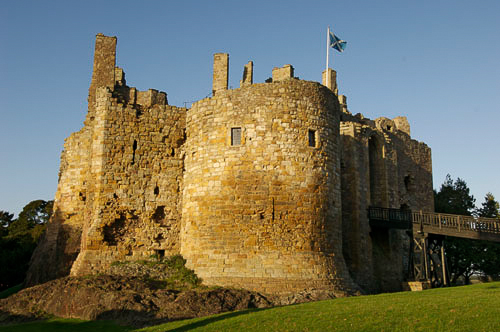
UPDATE on Castle Inspections
Historic Environment Scotland (HES) has completed their tactile structural survey of Dirleton Castle and the consultant’s report is awaited. The survey of Tantallon Castle is ongoing.
For HES’ press release regarding the surveys please follow this link Dirleton-Tantallon Castles Press Release 20Jan2023
Opening Times
Due to access restrictions in place as a precautionary measure whilst HES undertake high level masonry inspections, there is currently no visitor access to the castle or doocot.
The gardens are fully open.
Summer: 1 April – 30 September 9.30 – 5.30
Winter: 1 October – 31 March, 10 – 4
Please refer to the HES website for prices and other admission and booking details. Entry is free upon display of a valid Dirleton Village Association membership card.
Dirleton Castle and Gardens are situated in the heart of Dirleton, separated from the Village Green by an impressive wall which encloses the castle, beautiful walled gardens and a bowling green. Dirleton Bowling club has its base at the side of the castle : Dirleton Bowling Club
The castle was built in the 13th Century and for the first 400 years of its life served as the residence of three noble families, the de Vauxes, Haliburtons and Ruthvens. The subsequent downfall of the Ruthvens saw the castle abandoned and the siege by Oliver Cromwell’s soldiers in 1650 rendered the castle almost derelict. When the Nisbets purchased the castle in the 1660s and built the Archerfield Mansion House nearby, the graceful ruins became a major feature of their estate. The family finally handed the castle into state care in 1923 and the ruins and gardens are now maintained by Historic Scotland.
Today, the castle is a delightful place to visit by adults and children alike, who can enjoy scrambling up and down the de Vaux towers, peering into the grim prison pit and cavernous storage vaults and hiding inside the Ruthven dovecot, one of the best preserved pigeon houses in Scotland, housing over 1000 nesting boxes.

The gardens of today date from the late 19th and early 20th Centuries. The formal Victorian West Garden was faithfully reconstructed in 1993 and the beautiful North Garden, the first herbaceous border the visitor sees on entering the Castle grounds, dates from the Arts and Crafts movement of the 1920s. At 705 feet long (215 metres) it is the world’s longest herbaceous border.
